How to Deal With a Sick Cat
Do you suspect that you may have a sick cat on your hands? Read on to learn more about identifying and caring for a sick feline friend.
CATS
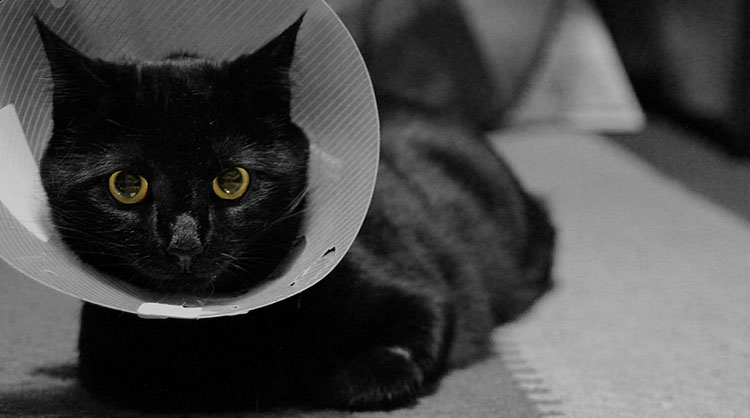
Posted by bravectosouthafrica – 23 October 2019
A Guide to Sick Cats
- What is Typical Sick Cat Behaviour?
- Signs of a Sick Kitten
- Sick Cat Symptoms for Serious Diseases
- The Best Foods for Sick Cats
- The Best Medicine for Sick Cats Suffering From Ticks, Fleas and Ear Mites
What is Typical Sick Cat Behaviour?
Noticing when you have a sick cat may well be a challenge because they are naturally inclined to hide the fact from you. You may, however, be able to pick up on various behavioural changes.
Cat Behaviour Changes That Could Indicate an Underlying Issue
A Sudden Increase in Appetite
People usually tend to worry when their cat shows a decrease in appetite, but the opposite is also true.
Any sudden changes in your cat’s usual appetite could be an indication of underlying problems or disease. Increased appetite may be a sign of endocrine issues, like diabetes and hyperthyroidism. Nutrient malabsorption problems, like inflammatory bowel disease and intestinal cancer, is also a possibility.
A Sudden Increase in Water Drinking
If your cat is drinking much more water than usual, it could absolutely be a sign that something isn’t right. It may be a sign of diabetes, kidney disease or thyroid issues.
A Decrease in Time Spent Grooming
There are multiple reasons why your cat is grooming less frequently. Overweight cats might be physically unable to groom themselves. In turn, being overweight can cause cats to suffer from numerous other diseases, such as cancer, diabetes and reduced quality of life and life expectancy.
Cats suffering from ailments such as arthritis, dental disease or injury may also groom less frequently. Older cats may be suffering from senility, which can also lead to less time spent grooming.
An Increase in Vocalisation
If your cat is ordinarily quiet and rarely makes a peep, but is now meowing – or even sounding different – they may be trying to tell you they’re feeling unwell.
Do keep in mind that if an ordinarily talkative cat is now barely making a sound, it is also cause for concern. Consider what is normal for your cat and access their behaviour accordingly.
Bad Smelling Breath
If you notice your cat’s breath is unusually smelly, they may be suffering from a common dental disease such as periodontal disease. Your vet will be able to advise you on possible dental cleanings, as well as what action you can take at home.
Dental disease should be taken seriously, as it can lead to more grave issues, affecting the heart, liver and kidneys. Diabetes and kidney disease may also lead to your cat having strange smelling breath.
No Longer Using Their Litterbox Correctly
Changes in litterbox use could be a sign of either a behavioural or medical issue.
If it’s a behavioural issue, the cause may be stress-related, such as household changes (a move, new household member, or new brand of kitty litter). Medical causes could include diseases such as arthritis, feline intestinal cystitis, or urinary tract infections amongst other things.
A Change in Their Pupils
As is the case with all animals, your cat’s pupil size will vary depending on the light. However, irregular or persistent pupil changes at random warrant concern.
Constricted or dilated pupils at inappropriate times (i.e. doesn’t correlate with the amount of light present), as well as cases where one pupil is constricted and the other dilated, could all be signs of underlying illness. Help the vet diagnose your sick cat by noting any other signs of eye issues, such as droopy eyes, discharge or partial coverage of the eye with the cat’s third eyelid.
They Keep Hiding Away
Experts differ on exactly why cats tend to hide when they’re feeling unwell. Whether it’s because their ancestors did it to protect themselves from predators in their weakened state, or because they just want to be left alone while they try to recover, it is something they tend to do when feeling sick.
Not only is hiding behaviour related to illness, but it can also be an indication of fear, stress, anxiety and injury. Sometimes your cat may just want to take a break. However, if they continue to vanish regularly and for long periods, you may want to visit the vet. This is especially true if the behaviour is accompanied by other changes, such as in drinking and eating habits.
They Are No Longer in a Playful Mood
Should your usually playful cat suddenly have little to no interest in playing or appears to be more lethargic for no apparent reason, they may be unwell. However, this isn’t always the case, as changes in the household (e.g. a new baby or visitors) and increased activity may be the cause.
A Change in Mood
If your cat is usually affectionate and cuddly, but is now acting aloof or irritable, it may be a sign of an underlying condition such as pain and senility.
Cats suffering from back or joint pain can act hostile when being touched in the affected area. When your cat is suffering from a condition like hyperthyroidism, they may be hyperactive – this can also be misinterpreted as hostility.
Disclaimer: The aforementioned cat behavioural changes should be used as a guideline only. If you suspect that your cat may be ill, go see your vet ASAP.
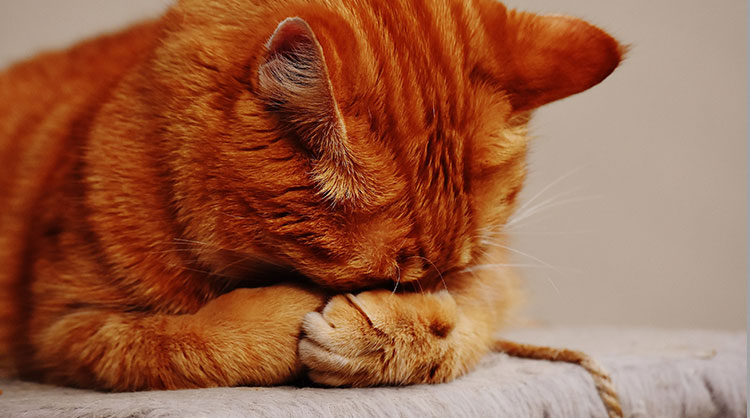
Signs of a Sick Kitten
Kittens are especially susceptible to a variety of diseases. You should be on the lookout for any and all changes in their behaviour or routine. Early intervention by a trusted vet will lead to the best possible prognosis, leaving your kitten feeling healthy again in no time at all.
Warning signs that your kitten could be unwell, include:
- A body temperature of under 37°C or over 39°C
- Decreased appetite
- Rapid weight loss or inability to gain weight
- Persistent crying
- Constant diarrhoea
- Continuous vomiting
- Pale gums
- Lethargy
- Dehydration
- Bleeding
- Trauma
Do not hesitate to contact your vet, should your kitten be displaying any of these signs. Remember: it’s better to be sure than sorry. Get a handle on your kitten’s health early on, to prevent more serious complications down the road.
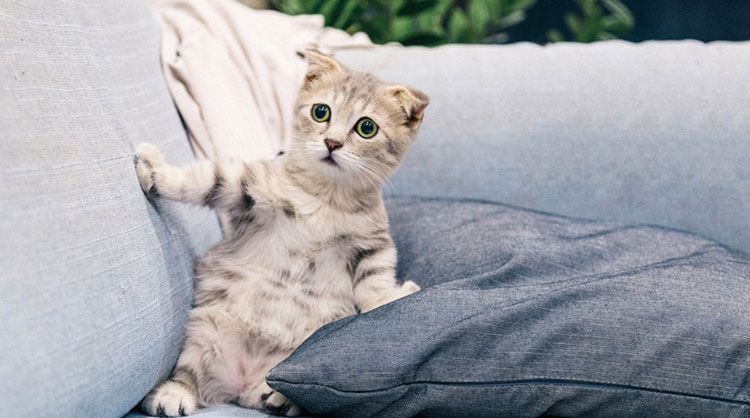
Common Kitten Health Issues and Illnesses
Some of the most common health issues kittens are known to struggle with are:
Diarrhoea
This isn’t a disease in itself. Loose stool is an indication of another underlying issue, like internal bacteria (or a lack of beneficial intestinal bacteria), parasites, viruses such as a coronavirus, feline leukaemia, or distemper.
However, don’t jump to any conclusions, as something as simple as overfeeding, a diet change, or stress, can also be the culprit. Should your kitten otherwise be alert and content, try adjusting her diet (i.e. more water or cutting back the amount of food).
Dehydration
If you’re concerned that your kitten may be suffering from dehydration, be sure to look out for signs of dry, hard stool, sticky gums and mouth, dark urine (dark brown, red or yellow), and tenting of the skin.
To test for tenting of the skin, pull at the skin at the scruff of your kitten’s neck – should it go back to its original position a second after being released, your kitten is fine. If it takes longer or remains that way, your kitten is suffering from severe dehydration and should be tended immediately.
Constipation
There are a variety of reasons why your kitten may be experiencing constipation, including dehydration. Try adding more water to any formula or gruel that you feed them. Alternatively, your kitten may have an internal blockage, possibly by a foreign body.
If your kitten isn’t able to pass a stool within 48 hours, it’s definitely time to pay your vet a visit. Should your kitten, alongside this, begin vomiting, you need to get them to a vet as soon as possible.
Upper Respiratory Infections (URI)
Kittens are more prone to develop URI than adults and orphaned kittens are especially vulnerable to this disease. Whatever you do, don’t treat your kitten with over-the-counter medication – many of these contain ingredients (such as acetaminophen and aspirin) that are toxic to our feline friends.
Be sure to take your kitten to the vet the moment you notice any sneezing or sniffling. URIs are extremely contagious – keep the affected kitten isolated from other household pets.
Your kitten may display the following symptoms: eye/nasal discharge, fever, loss of appetite, mouth ulcers, sneezing, and limping due to joint pain. As is the case with human colds, your kitten will have to let a cold run its course – your vet will treat the symptoms.
Antibiotics may be prescribed and under the skin, fluids may also be necessary. Your vet may have you tube feeding your kitten, as a cold could leave them with little to no appetite.
Fading Kitten Syndrome
This is a degenerative disease that appears as if out of nowhere. A kitten that initially appeared happy and healthy may rapidly deteriorate without any obvious cause.
The condition normally manifests within the first several weeks after birth. There are a variety of causes, including birth defects, blood incompatibility (with their mother), and viruses. Fading kitten syndrome is more prevalent among purebreds.
Treating Kitten Parasites
Aside from the conditions already mentioned, your precious kitten may also suffer from a common parasitic infestation, such as fleas. This is especially true if your kitten was a stray. A large flea infestation can lead to potentially fatal anaemia. Fleas can also further infect your kitten with tapeworms.
Use a fine-toothed flea comb and flea shampoo when grooming your kitten, to get rid of excess fleas. Be mindful of the fact that not all flea treatments are safe for kittens under a certain age or weight.
If you’re on the lookout for a fast-acting, long-lasting and safe solution to treat ticks, fleas and ear mites, look no further than Bravecto®. Vet approved and recommended, you can apply a dose of Bravecto® Spot-On for Cats if your cat is older than 11 weeks and weighs at least 1,2 kg.
With Bravecto® treatment is quick and easy: simply part the skin at the base of your cat’s neck and dab the product onto their exposed skin with the convenient Twist’n’Use™ applicator. Voilà – 3 months of tick, flea and ear mite protection sorted!
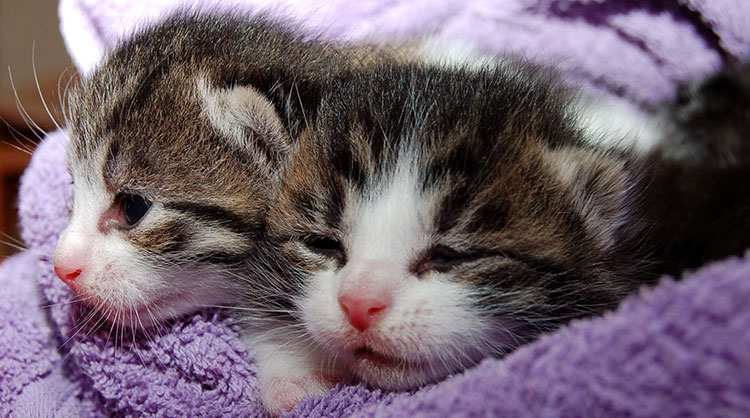
Sick Cat Symptoms for Serious Diseases
Some symptoms can be signs of deadly feline diseases. Should your cat be displaying any of the following symptoms and you have any reason to believe your feline friend may be suffering from one of these diseases, visit your vet as soon as possible.
Feline Hyperthyroidism
Just like in humans, feline hyperthyroidism is caused by the body’s overproduction of thyroid hormones.
The condition leads to an elevated metabolic rate, which puts a strain on organs such as the heart, kidneys, and liver. If this condition goes untreated, it can prove fatal. The condition can be treated with medicine, radioactive iodine therapy or surgery.
Feline hyperthyroidism symptoms to look out for include:
- A dry coat
- An increase in thirst
- An increase in urination
- Changes in appetite
- Diarrhoea
- Heart disease
- Vomiting
Feline Infectious Peritonitis or FIP
Feline infectious peritonitis is transmitted via contact with infected faeces and is caused by a feline coronavirus.
There are two variants of the disease: dry and wet. Dry causes inflamed lesions (pyogranulomas) throughout a cat’s body and it affects body systems and vital organs such as the central nervous system, kidneys, and liver. Wet results in a build-up within a cat’s chest, causing either abdominal distension or respiratory issues. FIP usually affects cats under two years old and most cases are fatal.
Feline infectious peritonitis symptoms to look out for include:
- Fever
- Lethargy
- Weight loss
Feline Rabies
Once a cat contracts this disease, via either a bite or saliva from an infected host, the only result is death.
This viral disease will attack a cat’s brain, spinal cord, and nerves. You need to vaccinate your kitten against rabies at 12 weeks old, followed by a booster shot 1-9 months later. Adult cats can be vaccinated every 1-3 years after their initial annual booster shot.
Feline rabies symptoms to look out for include:
- Aggression
- Drooling
- Fever
- Hyperactivity
- Muscle spasms
- Weight loss
Feline Leukaemia
Feline leukaemia is cancer that affects the body’s white blood cells. The disease spreads through a virus that’s found in feline urine and saliva.
Cats who are most likely to contract the disease are those living near infected cats. Fighting, sharing bowls or even exposure to the mother cat’s placenta are all common ways cats can contract feline leukaemia. The disease is often fatal, but regular vet visits, vaccination, and keeping your cat away from infected cats will all help prevent infection.
Feline leukaemia symptoms to look out for include:
- Bladder infection
- Diarrhoea
- Infertility
- Skin disease
Feline Diabetes
Cats are susceptible to both type 1 and 2 diabetes, just like people, and it’s becoming more prevalent as cats nowadays live longer, and are likelier to be obese and consume diets high in carbs.
Type 1 is the rarer of the two and occurs due to a lack of insulin. Type 2 is the more common one and is caused by a resistance to insulin. Treatment for both is typically the same. Blood work will have to be done to confirm a diagnosis.
Feline diabetes symptoms to look out for include:
- Increased urination
- Increased thirst
- Vomiting
- Weight loss
- Plantigrade stance – i.e. when a cat starts walking on their rear hocks, no longer on their toes
Feline Immunodeficiency Virus or FIV
This feline-specific variant of HIV gets transferred via bite wounds. Once this virus enters a cat’s bloodstream and begins to attack their immune system, it’s fatal.
The virus is known as a lentivirus (also referred to as a ‘slow virus’). If your cat becomes infected, they may look and act normal for years, as the virus steadily weakens their immune system.
Your vet is likely to test for FIV when your cat is still a kitten. Annual check-ups are recommended, especially if your cat is showing signs of the virus.
Keep your cat indoors or away from feral and territorial cats and always stick to your cat’s vaccination schedule. Recommended treatment will vary from vet to vet, but most agree that FIV will drastically affect and shorten cats’ lives.
Feline immunodeficiency virus symptoms to look out for include:
- Diarrhoea
- Dry coat
- Skin disease
- Weight loss
Feline Kidney Disease
All cats can be affected by kidney disease, but it is especially prevalent in cats older than seven and long-haired breeds, like the Angora or Persian. This condition can develop after the ingestion of toxic substances (pesticide) or human medications (ibuprofen).
Should you suspect that your cat is suffering from kidney disease, take them to the vet as soon as possible. Your vet will perform blood and urine tests. Should the cause be related to urinary-tract blockage, surgery may be performed.
If the cause is related to an obstruction, however, your cat will receive hydration therapy, medication, as well as a special diet that promotes kidney health. This should help clear up your cat’s kidney disease over time.
Feline kidney disease symptoms to look out for include:
- Bad breath
- Drooling
- Dry coat
- Increased urination
- Increased thirst
- Weight loss
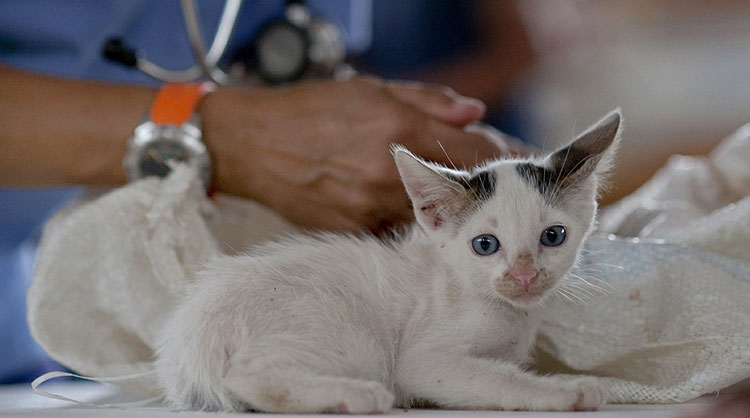
The 5 Best Foods for Sick Cats
When your feline friend is feeling unwell, be sure to speak to your vet about any possible changes that can be made to their diet during the recovery period.
Some go-to foods that are sure to entice fussy felines enough to eat and keep their strengths up, include:
- Chicken and rice
- Pasta and mincemeat
- Chicken soup
- Human baby food (be sure to check the ingredients, as many human foods are unsuitable for cats)
- Their prescribed food, combined with tuna water
Read more about how to prepare these foods, to suit your sick cat’s needs specifically, here.
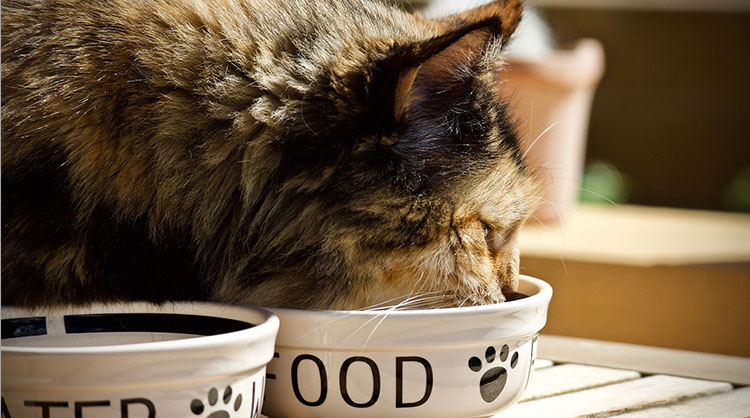
The Best Medicine for Sick Cats Suffering From Ticks, Fleas and Ear Mites
If your cat is struggling with an external parasite infestation, look no further than Bravecto® for Cats. Bravecto®‘s easy-to-use Spot-On for Cats is fast-acting, long-lasting, and – most importantly – safe. As long as your feline friend is 11 weeks or older and weighs at least 1,2 kg, Bravecto® is a safe solution to get their tick, flea and ear mite infestations under control.
Simply apply a single dose of Bravecto® Spot-On for Cats by parting the hair at the back of your cat’s neck and dabbing the treatment onto their exposed skin with the handy Twist’n’Use™ applicator. That’s 3 months of tick, flea and ear mite protection in one convenient dose.
Afraid you’ll forget when to give your cat their next dose? Download Bravecto®‘s handy mobile reminder app today. After downloading, you’ll be asked to create a profile for your pet and the date on which you last treated them. Now you’ll receive a notification when your pet’s next dose is due. It’s that simple!
Follow this link If your cat is troubled by ear mites.
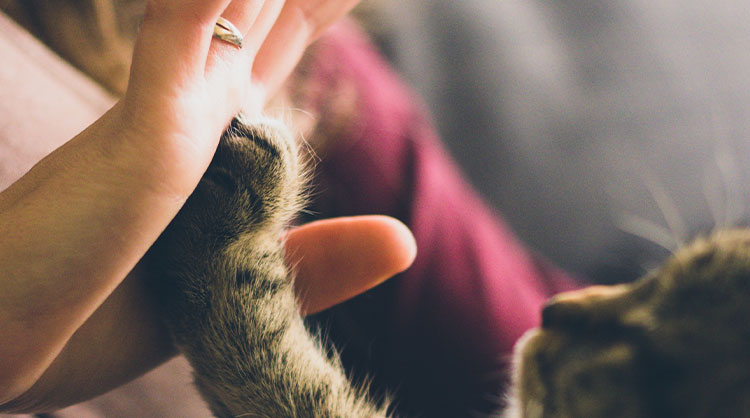
Subscribe to our Newsletter
Get to know your furry friend better! Sign up for all things dog- or cat-related.
The Hairy Facts about the dreaded hairball
12 April 2021
Help! My dog’s barking mad! Volume 2
12 April 2021
Your Itchy, Scratchy Cat – All About Cat Skin Problems
12 April 2021
The Dog’s Diet: A Bone of contention?
01 April 2021
Mango Fly Worms: How to Spot and Eliminate them
Posted on November 28,2019
Managing Mange And Mites In Your Dog
Posted on June 11,2018
Why Do Cats Purr and How? Learn What Your Cat Is Saying
Posted on October 14,2020
How to Get Rid of Ear Mites in Dogs
Posted on November 06,2019









